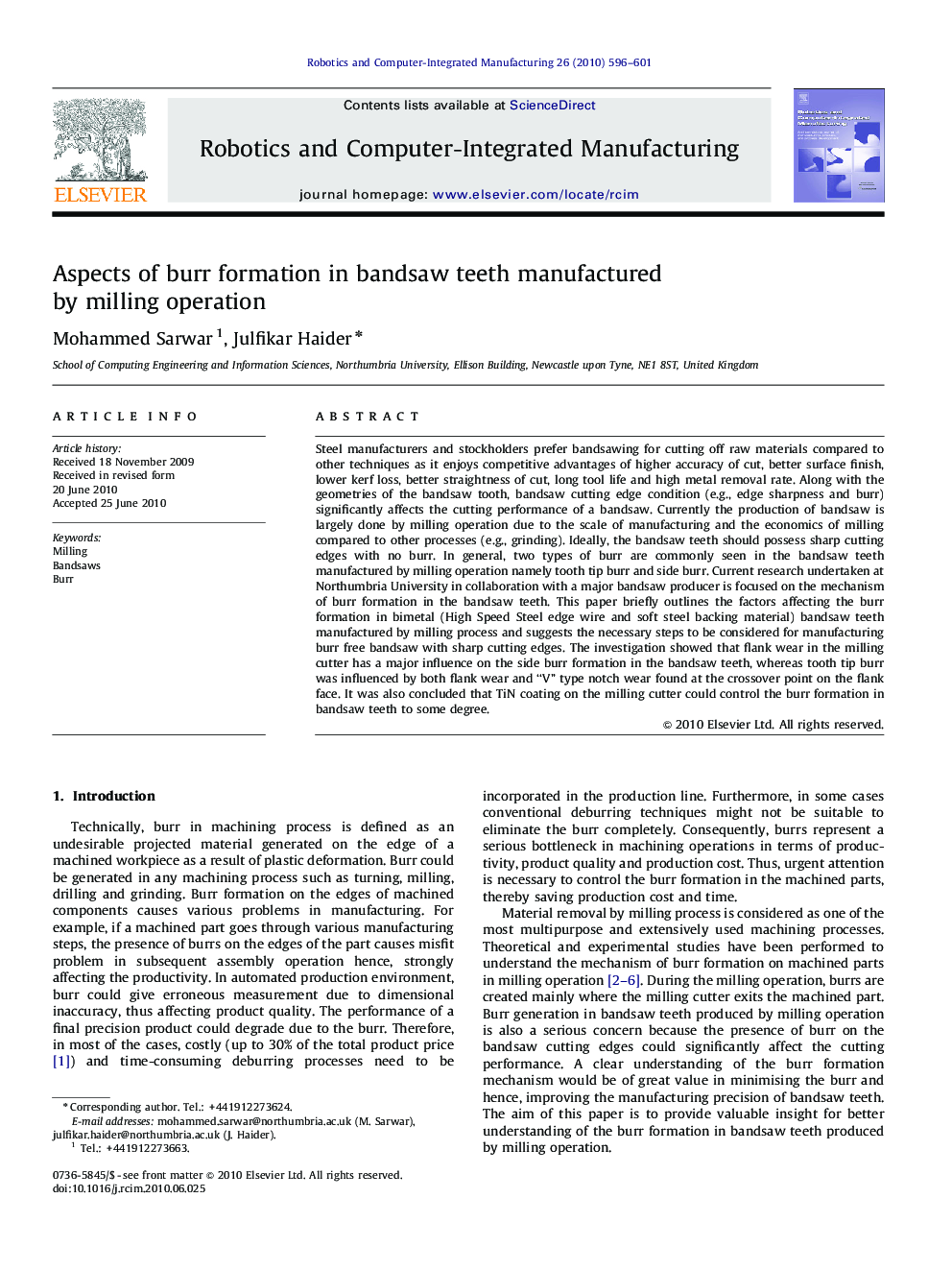| Article ID | Journal | Published Year | Pages | File Type |
|---|---|---|---|---|
| 414550 | Robotics and Computer-Integrated Manufacturing | 2010 | 6 Pages |
Steel manufacturers and stockholders prefer bandsawing for cutting off raw materials compared to other techniques as it enjoys competitive advantages of higher accuracy of cut, better surface finish, lower kerf loss, better straightness of cut, long tool life and high metal removal rate. Along with the geometries of the bandsaw tooth, bandsaw cutting edge condition (e.g., edge sharpness and burr) significantly affects the cutting performance of a bandsaw. Currently the production of bandsaw is largely done by milling operation due to the scale of manufacturing and the economics of milling compared to other processes (e.g., grinding). Ideally, the bandsaw teeth should possess sharp cutting edges with no burr. In general, two types of burr are commonly seen in the bandsaw teeth manufactured by milling operation namely tooth tip burr and side burr. Current research undertaken at Northumbria University in collaboration with a major bandsaw producer is focused on the mechanism of burr formation in the bandsaw teeth. This paper briefly outlines the factors affecting the burr formation in bimetal (High Speed Steel edge wire and soft steel backing material) bandsaw teeth manufactured by milling process and suggests the necessary steps to be considered for manufacturing burr free bandsaw with sharp cutting edges. The investigation showed that flank wear in the milling cutter has a major influence on the side burr formation in the bandsaw teeth, whereas tooth tip burr was influenced by both flank wear and “V” type notch wear found at the crossover point on the flank face. It was also concluded that TiN coating on the milling cutter could control the burr formation in bandsaw teeth to some degree.
